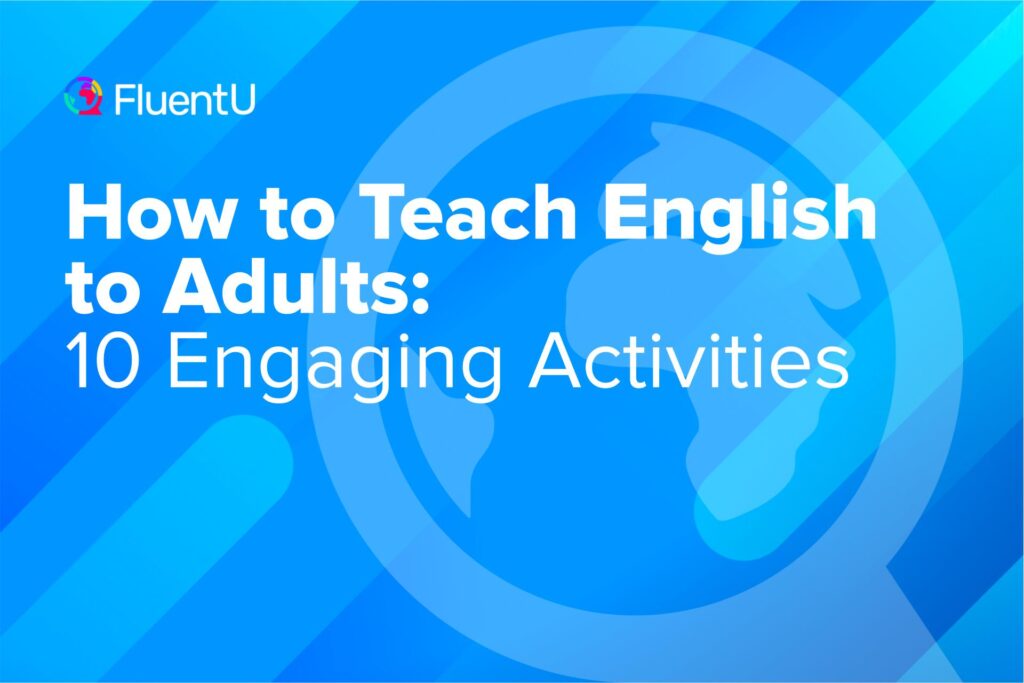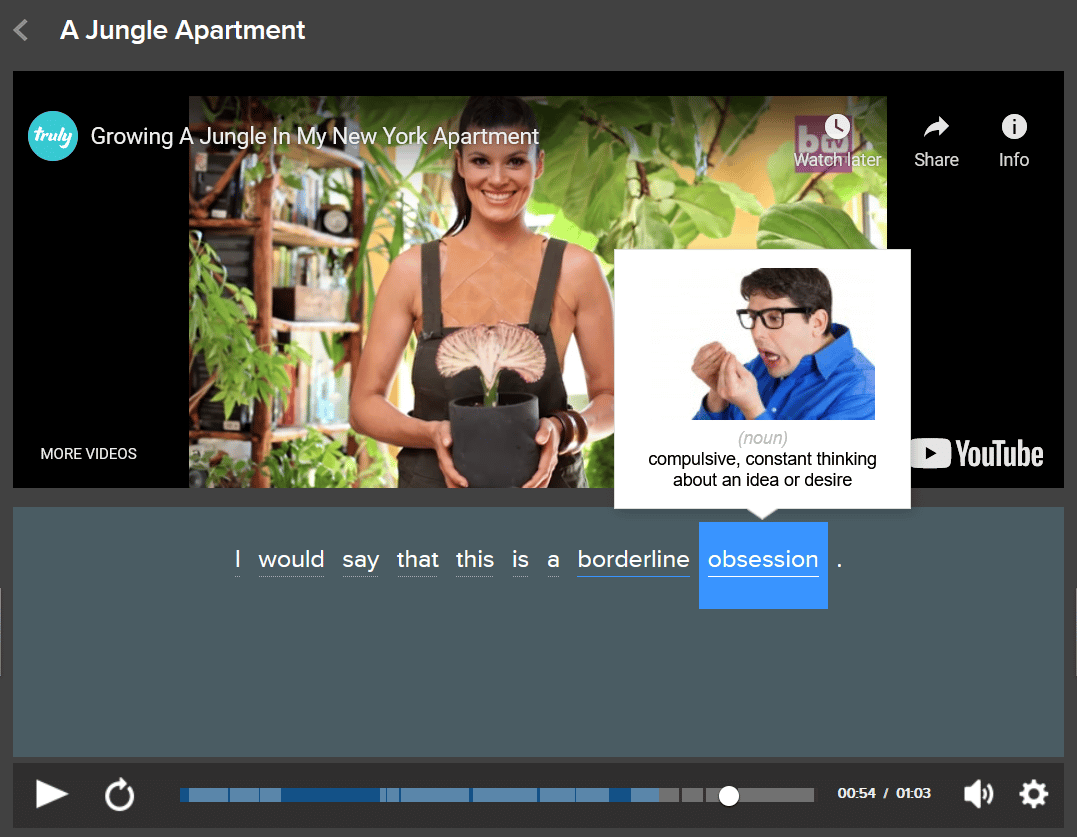How to Teach English to Adults: 10 Engaging Activities

Teaching English to adults is not the same as teaching children or teenagers. There are some important differences you must consider, such as their reasons for learning and certain stressors and pressures they might be facing.
But just because adult learners might take the English lessons more seriously than some of your younger students doesn’t mean they have to be dull or serious. Learn about 10 activities that you can use in your adult ESL classes below.
Whatever language skill your students need to practice, we’ve got you covered.
Download: This blog post is available as a convenient and portable PDF that you can take anywhere. Click here to get a copy. (Download)
Why Is Teaching ESL to Adults Any Different?
Unlike carefree children, adult ESL learners face unique stressors and pressures that you should keep in mind.
They might feel pressure from their boss to learn English or need to speak the language to be successful in a new country. Negative memories from their school days or the fear of being too old to learn can also impact their confidence. Many adult learners are what we call false beginners, having attempted to learn English in the past without success.
Whatever their situation, they’ve now taken the leap by signing up for ESL classes and are trusting that their time (and money) won’t be wasted.
Adults are also generally more self-conscious than kids and don’t like to make mistakes or look silly. That doesn’t mean that your ESL lessons shouldn’t be fun! It just means you may want to ease into interactive activities and avoid having them answer questions in front of the entire class before they’re ready.
How to Engage and Encourage Adult ESL Learners
So how can you make sure that your adult students have a positive learning experience? Try these suggestions:
- Provide an activity-based learning program—not just “chalk and talk.”
- Encourage them to get involved rather than just spectating.
- Check in regularly to make sure that they succeed in their learning.
- Encourage self-confidence and perseverance and show them how they’re progressing.
- Remind them that mistakes are all part of the learning process.
- Make sure that you have the right training. If they’re expecting someone with TEFOL certification, you should have it—and let them know that you do.
The following activities take into account the differences in teaching adults and are tailored for high engagement. Look for the asterisk to see ideas for adjusting activities to one-on-one lessons.
Listening Activities
These activities help to ensure that your students are really listening in class by requiring responsive action and engagement.
Bingo
This fun, well-known game can be used to review vocabulary or other language concepts. Here’s how:
- Create a list of words or expressions that you want them to learn or practice.
- Use a website like ESL Activities to create and print a card for each student with words from the list in different arrangements. Use the standard 25 spaces or create smaller cards with only 16 or 9 spaces for a shorter game.
- Print out a set of caller cards as well. These can have each of the words from your vocab list, or you can use clues to make students figure out which space to mark.
- The caller (you or a student) will call out the word or clue and your students will mark the words as they hear them. Have them use a pencil with erase or some kind of movable marker so you can reuse the boards.
- When someone gets 5 markers in a row in any direction (horizontal, vertical or diagonal) they call out “Bingo!” and win the game. Then everyone removes their markers and the game starts again. The winner could be the new caller, and players could swap cards to keep the experience fresh.
As this is more a game of luck than skill, students won’t be afraid of failing and will stay engaged and motivated. And by the end of the lesson, everyone will know all of the vocabulary!
*One-on-one: You and your student could have one card (or even two or three cards) each and take turns pulling caller cards out of a hat.
The Art of Listening
In this activity, students will follow verbal instructions to create a piece of artwork. They could start with a blank piece of paper, or they could have a prepared picture and color it in a particular way. Coloring isn’t just for kids—it’s a great, relaxing activity for adults, too!
The students will draw or color according to your instructions or those of a classmate. Make sure you encourage a sense of fun and reassure each student that it doesn’t matter whether their drawings are artistically advanced or not. It’s not a competition, and there are no winners or losers.
Students could work in pairs on the same piece of paper, or even on a section of the board, taking turns adding something to the drawing as they listen to instructions.
*One-on-one: This activity can work as is in a one-on-one situation. You could also try following a set of written instructions and drawing with your student, or letting them come up with the instructions in English for you to draw out.
Speaking Activities
Each of the listening activities from above can become a focused speaking activity to give your students more practice and help build their confidence.
Bingo Talks
Giving a fairly formal short talk on a set topic is an important practice in ESL adult classes, especially if students are preparing for a standardized exam such as IELTS, TOEFL or TOEIC. They may also be expected to give talks in English at work.
Here’s how you can incorporate speaking practice into a Bingo game:
- Start by writing topics on the board that are related to areas of interest in your students’ personal, professional and academic lives.
- Ask the class to brainstorm key words for each topic.
- Draw up small bingo cards with 9 spaces and have them choose and arrange words on their cards.
- Have students take turns giving short talks about the topics using the key words on the board. This can happen in the same class period, or you can assign writing a talk as homework. Have the students copy all the words and then draft talks to read out loud during the next class.
- While one person is giving their talk, the others will listen for the key words to mark off on their Bingo cards. This keeps all of the listeners quiet and attentive.
This activity can relieve a bit of pressure on the speaker, as the other students will be focused on listening for and marking off key words rather than just sitting and staring at the speaker.
*One-on-one: You can do the activity as is with the student speaking, then use a video with a set of key words for them to watch and listen while playing Bingo.
Directed Drawing
For this activity, one student can draw on the board while their classmates give instructions. You can stick a picture on a chair for all students to see, except the one at the board. Alternatively, this activity can be done in pairs.
The speaker(s) describe a simple picture, providing specific details about size and positioning so the listener can draw it. To make it more challenging, tell them they can only use shape terms rather than specific vocabulary items—e.g., they must say “draw an oval” and so on, rather than “draw a face.”
This is a collaborative exercise where students cooperate to create a picture. Everyone will be engaged as they think of words to help describe exactly what to draw or how to correct the drawing.
You can find simple pictures to use for this activity by searching your topic plus “drawing” or “clip art” on Google Images.
*One-on-one: You can take turns with your student to draw and instruct.
Take a Survey
Forming questions can be tricky in English, especially when you add various degrees of politeness and indirect questioning. Here’s an activity to help your students practice asking and answering questions:
- Prepare questions or help your students create questions around a particular topic, using vocabulary that you’re focusing on at the time.
- To start, each student could have three related questions. Some variety between each students’ questions will help to keep it interesting for everyone. You can see some examples of surveys.
- Tell your students to survey a number of other students—maybe 6 or 10, depending on your class size—and keep a record of their answers. This is easier to do if the questions are carefully worded to limit the number of possible answers.
- Then they can collate what they’ve found out and prepare a short talk for the class about their results.
*One-on-one: You and your student can interview each other, and then give a summary of what you’ve learned. You could also have your student survey others—maybe in your school hallways, or in a local shopping center or library.
Reading Activities
Reading in English is an important part of learning the language and using it in the real world. Here are some activities to help your adult ESL students practice their reading skills.
Reading Aloud
Children in school are frequently asked to take turns reading aloud. Due to their level of familiarity with it, adults often find this quite a relaxing activity in the classroom.
Everyone should have a copy of the story or article and be following along and engaged. This could be done as a whole class, in pairs or in small groups.
Depending on the material and the students’ comfort level, this could lead to a role-play or drama activity.
*One-on-one: Take turns reading a story or article out loud. This will give your student a chance to practice reading and speaking as well as listening to proper pronunciation.
Scavenger Hunt Reading
This is particularly fun if you can get a bunch of free local newspapers, but you can use other texts as long as each student or pair has the same. Get them to find a particular word, expression or answer to a question on a particular page.
In this activity, everyone is engaged in scrambling through the paper and scanning pages for clues. They can also take turns suggesting things for others to look for.
*One-on-one: You and your student can take turns being the searcher and giving instructions on what to search for.
Dictionary Scramble
If you have enough English dictionaries to go around, hold a race to see who can find a word first and then read its definition out loud. This allows students to practice reading and correctly pronouncing difficult words using the help provided in the dictionary.
You could start by reading together (silently) through an interesting—but maybe slightly difficult—article and choose some words to look up in the dictionary.
You can also use technology for this activity with FluentU.
FluentU takes authentic videos—like music videos, movie trailers, news and inspiring talks—and turns them into personalized language learning lessons.
You can try FluentU for free for 2 weeks. Check out the website or download the iOS app or Android app.
P.S. Click here to take advantage of our current sale! (Expires at the end of this month.)

Search through the program’s many videos from authentic media and choose a clip that you think will engage your students and that’s slightly above their current skill level. FluentU organizes all its videos into six skill levels from absolute beginner to nearly fluent.
You won’t need all those dictionaries if you use FluentU, since the program has a built-in contextual dictionary. Students can simply click on any word to see what it means, view other videos that use it or add it to a flashcard list.
They can practice reading with video transcripts, listening (toggle off subtitles to encourage focus on the spoken words), writing (with personalized quizzes) and even speaking (on the app).
You can adapt this activity to have students watch videos with different uses of one word, like “date” meaning “to go on an outing” as well as “a specific day on the calendar.” Students can then teach each other the meaning that they learned.
*One-on-one: Your student chooses words from a text or article, and then you race to look them up or take turns reading their definitions and using them in a sentence.
Pelmanism
This is the old “Concentration” memory card game. To play, you need pairs of cards with two identical words or expressions, a word and a corresponding image or a word and its meaning.
Students could choose their own words, make a few cards of their own and challenge a partner or friends, mixing their cards together. (Just make sure the cards all look the same on the back!)
To play the game:
- Mix up the cards and then lay them face down in neat rows.
- Each player takes turns turning over one card and reading it aloud, and then selects and turns over a second card. If the cards match they keep the pair, leaving spaces in the array, and have another turn. If there’s no match they turn them over carefully and (both players) try to remember them.
- Once all cards have been claimed, the player with the most pairs wins the game.
*One-on-one: This game is perfectly suitable for only two players, and will give your student plenty of opportunity to review vocab and exercise their memory.
Writing Activities
You can tailor writing activities to adult students by making them relevant to their daily lives and the writing they’ll have to do in English. Here are a few ideas.
Reality Hour
Let your students decide what they need to learn. What kind of writing will they be using most often at work or school? Talk to them to find out. Then, assign them a writing hour in class that lets them practice that type of writing.
- Job applications: Find some authentic job openings on the Internet, print them out and have students practice writing applications, cover letters and CVs.
- News article: This is great practice for describing an event that has occurred or an imaginary event. Students can be required to bring in a news article that’s relevant to their lives or make up a news story that matches their own interests. Then they’ll need to write their own articles or summaries. Try making a class newspaper.
- Class blog: There are lots of options for setting up a free blog, such as Blogger and WordPress. Encourage your students to write a post every week.
- Reflective journal: This could be handwritten in a notebook or kept on a device or computer. They could choose whether to share what they’ve written with each other or with you.
- Emails: Encourage students to write emails to you and to each other. Then have them answer those received emails.
To keep everyone engaged with their writing, display writing pieces on the classroom walls or make a series of books that they can flip through to see what they’ve each written.
These activities are great for exercising real-world English skills.
Choose a few to try in class depending on what skills your students need to practice most, and find ways to encourage them along the way!
Download: This blog post is available as a convenient and portable PDF that you can take anywhere. Click here to get a copy. (Download)








